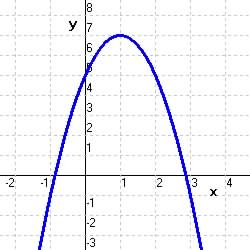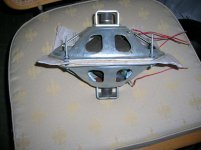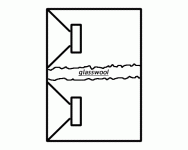Good stuff, George! I'll try to give it a go after work hours, and see if we can elucidate something about the dl/dz significance.
An other more simple solution that do not put any risk on the drivers should be to use a little closed box with the two speakers mounted on -it. Air pressure will be sufficient to couple the two drivers at 50Hz and will have quasi null influence at 10 000 ?This I can do. The low freq can be very low, so there will be enough of HF content within one LF cycle to analyse
Surge X is primarily a very large series L …. a HV transient is pretty much killed by it.
SURGE relates to lightning and it kills that so well an MOV isnt needed.
It is best used for protection. The very large series L causes a significant Z which affects PA transient current demands. Fine for protection of steady current loads... preamps etc.
Filtering is not the goal but a secondary effect. Better filtering and isolation is needed for HD Audio systems.
[PS - I have measured most every brand of any type of ac power line product. Really. I have measured and reverse eng all of the well known products.]
THx-RNMarsh
SURGE relates to lightning and it kills that so well an MOV isnt needed.
It is best used for protection. The very large series L causes a significant Z which affects PA transient current demands. Fine for protection of steady current loads... preamps etc.
Filtering is not the goal but a secondary effect. Better filtering and isolation is needed for HD Audio systems.
[PS - I have measured most every brand of any type of ac power line product. Really. I have measured and reverse eng all of the well known products.]
THx-RNMarsh
Last edited:
Ya. Most of the troubles are from currents in the ground pathes against which the best power supply rejection can not do anything. Let's us build power amplifiers with a digital optical input ;-)Better filtering and isolation is needed for HD Audio systems
Surge-X is a company/product that arises out of the work of Neil Muncy and Jim Brown. Very accomplished and knowledgeable about mains problems.
It shows
Residential – AMETEK | ESP | SurgeX
George
Attachments
Good stuff, George! I'll try to give it a go after work hours, and see if we can elucidate something about the dl/dz significance.
Take your time Daniel and enjoy doing it (it’s only a hobby) 🙂
An other more simple solution that do not put any risk on the drivers should be to use a little closed box with the two speakers mounted on -it. Air pressure will be sufficient to couple the two drivers at 50Hz and will have quasi null influence at 10 000 ?
I had this at the back of my mind, as I have two acoustically coupled left from another test. But the space between is minimal, and acoustic coupling will be effective at higher frequencies too. I’ll check it.
Thanks again
George
Attachments
I had this at the back of my mind, as I have two acoustically coupled left from another test. But the space between is minimal, and acoustic coupling will be effective at higher frequencies too.
Attachments
@Destroyer: Lots of Max Headroom level 'Axl said' with not a single graph. Headology at play I'm afraid.
Good point Bill. Here's a graph that represents my interest in discussing power conditioing with a crowd of engineers that can't seem to imagine how the inductors, capacitors, and transformers they use daily in a DC enviroment to cut noise, will be useful in AC application.

Btw there is a link in my sig to a filter for DIYers. With GRAPHS comparing to an older version that was popular. And many X caps you look at the spec sheet for will have a graph about attenuation.
What most people don't get is that the maximum attenuation isn't necessarily the best if it is achieved through poor circuits for compatibility with audio equipment. The SurgeX has less attenuation than many, but if you study them you'll find it is a smarter design (please note that they have a secondary board with another filter). So while it doesn't look amazing, it offers benign filtration with stellar protection. That is way better than the average conditioner that causes nearly as many issues as it fixes.
to state Richards comments another way, (appropriately sized) SurgeX would be more useful with a Class A amp than a Class AB amp.
Yes, load matters to series devices.
Other than your now discontinued devices from Monster, what else did you consider useful today?
Cheers
Alan
Yes, load matters to series devices.
Other than your now discontinued devices from Monster, what else did you consider useful today?
Cheers
Alan
to state Richards comments another way, (appropriately sized) SurgeX would be more useful with a Class A amp than a Class AB amp.
Yes, load matters to series devices.
Other than your now discontinued devices from Monster, what else did you consider useful today?
Cheers
Alan
I am not so sure the SurgeX is a problem for AB, but I haven't tried using any large ones on it.
Torus makes smart isolation transformers. Maybe not perfect, but better than others I have seen. IsoTek *might* be pretty good but I haven't got one into my hands to check out thoroughly.
Howie: would you not agree though that the use of mains isolation transformers requires an understanding of earthing (particularly safety earthing) beyond that of the level of the general target audience for domestic audio products?
Certainly creating full galvanically isolated power systems with separate isolated grounds is beyond the experimenter. A good stand-in requiring little specialized knowledge is to purchase one of the isolation transformers in a box. Unfortunately the unit Richard designed for Monster is no longer made, but there are others which offer good isolation minus the brute-force LF filtering, like those made by Equitech: http://www.equitech.com/model-q-shelf-or-rack-mounted-chassis-systems/
The means by which noise and ground loops are reduced by these units are twofold: Galvanic path interruption and transverse to common-mode noise transformation.
Thinking about it not sure Whitlock mentions them at all. That can't just be because Jensen don't make them? 😛
I know to many here I sound like an ignant McMuffin recommending transformers in the audio path, but in my experience, when they are needed they do far more good than any collateral damage, and Jensen's work really well. In general most Jensen transformers, especially the line level units are used in balanced audio transmission which implies mostly professional audio systems, and many studios already have well-designed power distribution separate from noise-generating circuits..
It is likely true that using quality components with good power supplies and excellent PSRR in the internal circuitry, just breaking ground loops will result in satisfactory noise rejection, but I have personally installed Jensen video and audio isolators in very high-end residential systems as well to break cable TV and other ground loops. And although Bill Whitlock has made forays into the consumer AV world with his isolators, I'm guessing he doesn't want to be in the power transformer business with its different core structures, different winding machines. I imagine the upfront tooling cost to make power isolation transformers would result in a very long ROI timeline; it is not a huge market.
Cheers!
Howie
Yes, but remember how difficult it was to pass the proof even with those measures in place?
To those not in broadcast, passing the proof in FM was S/N > -60db, and distortion < 0.1%. Not great specs.
Alan
Oh boy, you are spot on, the audio performance of old broadcast equipment would be embarrassing by today's standards, as was the equipment being used to measure it like the early Potomac stuff. That being said, by the late 1980's the best equipment like the PR&E consoles were good enough to be competitive by today's standards.
Cheers!
Howie
You have raised the question, you are part of the solution (and of the problem 😀)
I am told many times that I am part of the problem....familiar territory..
How can I do this?
Should I feed a driver with a two tone signal (a low freq and a high freq) and check with an FFT the harmonics of the high freq within a cycle of the low freq signal ? (f* difficult)
George
I have 132 4 inch drivers uncommitted. I was thinking about attaching two of them at ends of a sonotube or pvc about a foot long to remove magnetic interaction (perhaps a copper screen in the middle as well. Well sealed, I can use one to drive the second acoustically. Then input the test signal in the second, and monitor the distortion of the V/I space. Or, do a spectrum analysis of the current drawn by the second.
jn
Howie, I am slightly surprised to see Equi=tech made you approval. They are nice but I was baffled enough by some things I heard with them that I made a small device to supplement some of things they don't account for... the result was less monotone highs, less glare-ish sound, better spatial, cues. Overall the fatigue level become low, but it was a bit high in my friend's system prior.
Or analogue optical input.Ya. Most of the troubles are from currents in the ground pathes against which the best power supply rejection can not do anything. Let's us build power amplifiers with a digital optical input ;-)
Howie, I am slightly surprised to see Equi=tech made you approval. They are nice but I was baffled enough by some things I heard with them that I made a small device to supplement some of things they don't account for... the result was less monotone highs, less glare-ish sound, better spatial, cues. Overall the fatigue level become low, but it was a bit high in my friend's system prior.
The effects I have diagnosed attributable to an isolation transformer alone (no filter) are:
1) Current starving of power amps and premature clipping caused by too low a KVA rating.
2) Improper grounding and poor transformer isolation inducing leakage current.
We only use the large wall-mounted >5 KVA Equitech transformers so I can't really vouch for the smaller units. It is possible the effects you notice are caused by the transverse filter caps in the line filters those units contain which can certainly divert noise current from the mains to the grounding system.
Cheers,
Howie
Someone a few dozen pages ago mentioned starting a thread for all the good driver magnetics stuff.
Since a lot is your high-level kowledge, what thinks you jn?
Cheers,
Jeff
Since a lot is your high-level kowledge, what thinks you jn?
Cheers,
Jeff
Where are the filters located? If they are in the upper half maybe I missed it at my buddies place. I will say I would be hesitent to believe they did them correctly. X caps are good, but by themselves are not advisable for audio; so it really depends on what they are.
- Status
- Not open for further replies.
- Home
- Member Areas
- The Lounge
- John Curl's Blowtorch preamplifier part III


